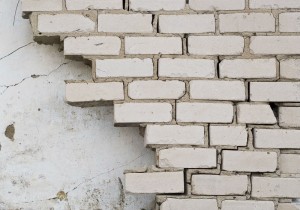There are a number of things going on inside and outside your chimney,even while it’s not being used. According to the Chimney Safety Institute of America, your chimneys are prone to various harsh conditions caused by both external and internal factors. This exposure increases the chances of damage and other wear and tear.
In our 30 years of experience here at Blue Sky Chimney Sweeps, we’ve had more than a handful of encounters with varying kinds of chimney damages and issues. One of these is spalling.
What is Spalling?
Don’t worry, you’re not the only one who’s asked us that question! Spalling, often referred to as concrete cancer, is the significant deterioration of the concrete between mortar between masonry. This is generally characterized by the distinct appearance of red rust and cracks.
What causes Spalling?
One of the known causes of spalling is the process called carbonation of concrete. When moisture meets oxygen and salts (or any other type of ion), it is a recipe for disaster. This allows a perfect environment that promotes the oxidation (corrosion) of steel. As we all know, our chimneys are mostly exposed to the outside elements. It is highly susceptible to moisture which makes it a perfect location for corrosion and thus, spalling. What you need to do is to make sure that your chimney is waterproof in order to avoid moisture.
Aside from carbonation, there are also other issues and factors that contribute to concrete spalling, and these are:
- Lack of protective surface coating that prevents the ingress of carbonation-causing chemicals
- Faulty concrete design or specification
- Incorrect placement of mesh and/or rebar which results in an inadequate concrete cover
Is there a way to prevent Spalling?
As every expert knows, there are always preventive measures that can be taken to prevent damages such as spalling to occur. In the case of “concrete cancer,”there are things that we can do in order to prevent it from happening:
- Follow best-practice concrete curing techniques
- Specify and ensure the use of an effective anti-carbonation and chloride ion resistant coating system
- Hire a reliable expert to ensure that the specified concrete coverage is achieved
Why wait for the concrete in your chimney or in other parts of your home to start showing signs of spalling? Contact an expert and do the necessary preventive measures as early as now.

